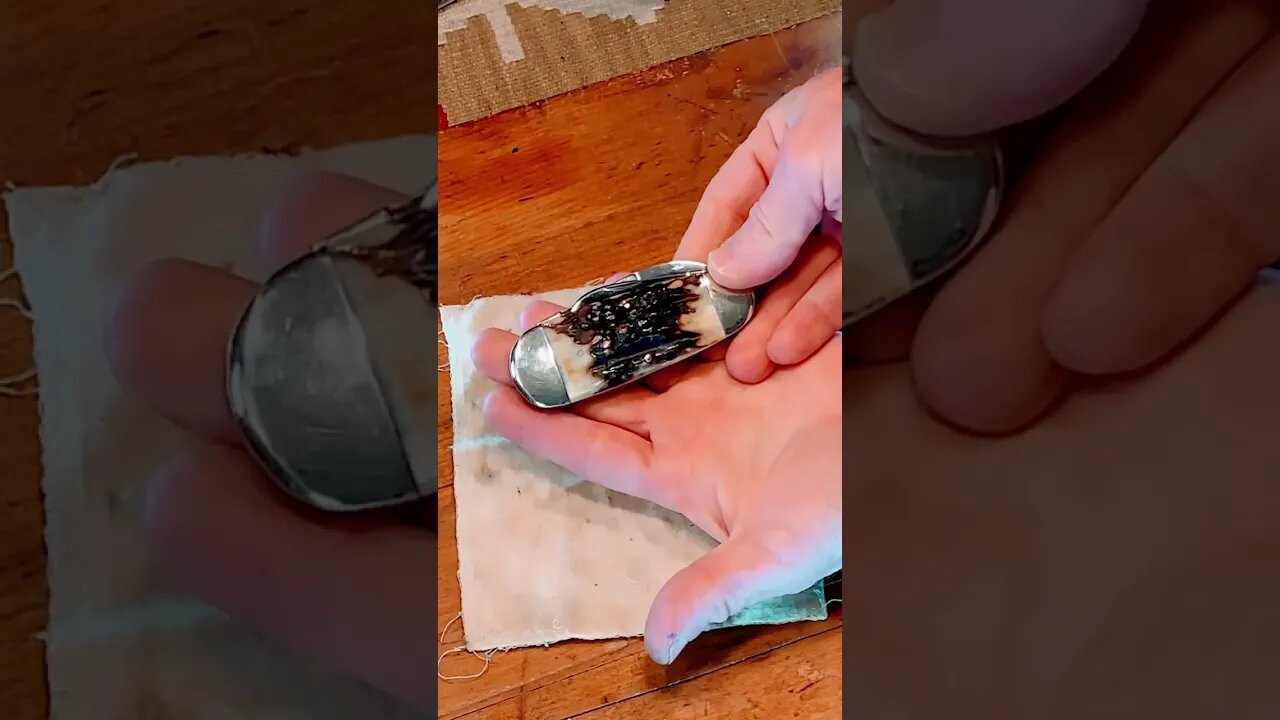Premium Only Content

WTH 🤦🏼♂️ is an elephant toe knife? Could you EDC it?#edc
Fighten Roster knives history
"Fight'n Rooster" knives, which were a brand of knives produced by the Fight'n Rooster Company. The company was founded in 1845 in Solingen, Germany, which has a long history of producing high-quality knives.
Fight'n Rooster knives were known for their attention to detail, craftsmanship, and use of premium materials. The company produced a wide range of knives, including pocket knives, fixed-blade knives, and novelty knives. Some of their most popular designs featured unique handles made from materials like bone, mother of pearl, and stag antler.
In the 1950s, Fight'n Rooster knives became very popular in the United States, and the company started exporting their products overseas. However, by the 1980s, the company began to struggle financially, and in 1983, they filed for bankruptcy.
Today, vintage Fight'n Rooster knives are highly sought after by collectors and knife enthusiasts. The company's legacy lives on through its knives, which are prized for their quality and craftsmanship.
Celluloid is a type of plastic that was commonly used in the production of knife handles in the late 19th and early 20th centuries. One of the issues with celluloid is that it is prone to breaking down over time and releasing harmful gases, including formaldehyde and camphor.
The process by which celluloid breaks down and releases gases is called "outgassing." This occurs when the plastic is exposed to heat or moisture, which causes the chemicals in the celluloid to break down and release gas. Over time, the buildup of gas can cause the handle of the knife to swell or crack, and may even affect the blade itself.
In addition to the health concerns associated with the release of harmful gases, outgassing can also affect the appearance and durability of the knife. The gases can cause the handle to discolor or become brittle, and may even cause the blade to rust or corrode.
To prevent outgassing, knife makers today generally avoid using celluloid for knife handles. Instead, they use other materials such as G10, Micarta, or stabilized wood, which are more durable and resistant to chemical breakdown over time. However, celluloid knives remain popular among collectors, and many vintage knives with celluloid handles can still be found in good condition.
-
 0:59
0:59
Doggorunning
1 year agoHohem M6 is a YouTuber MUST HAVE!
43 -
 56:24
56:24
Russell Brand
1 day agoEddie Gallagher: War, Betrayal & Fighting the System
90.5K11 -
 11:21
11:21
TimcastIRL
5 hours agoGOP Rep Says TWO SHOOTERS In JFK Assassination As FBI Uncovers TROVE Of Secret Documents
94K129 -
 1:04:55
1:04:55
Bare Knuckle Fighting Championship
4 days agoBKFC ITALY PRESS CONFERENCE | LIVE!
37.3K3 -
 10:04
10:04
Space Ice
3 hours agoThe Movie Silent Hill Is Like Resident Evil Without The Good Parts - Worst Movie Ever
21.1K4 -
 5:49
5:49
Hannah Barron
1 day agoRedneck Euro Mount
18.3K20 -
 32:34
32:34
hickok45
8 hours agoSunday Shoot-a-Round # 268
13.9K12 -
 27:33
27:33
The Finance Hub
18 hours ago $10.43 earnedBREAKING: ALINA HABBA JUST DROPPED A MASSIVE BOMBSHELL!!!
48.5K89 -
 40:23
40:23
PMG
22 hours ago $1.11 earnedHannah Faulkner and Dr. Michael Schwartz | EXPOSING BIG PHARMA
27.3K1 -
 18:55
18:55
GBGunsRumble
20 hours agoGBGuns Range Report & Channel Update 15FEB25
19.3K1